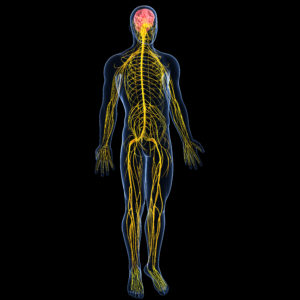Neurogenic bladder
Neurogenic bladder, or neurogenic bladder dysfunction, is a urologic condition in which normal bladder control is impacted by some form of neurologic damage, disease, or physical deformity. This condition involves problems with the nervous system: brain, spinal cord, and/or nerves. Individuals with neurogenic bladder may have difficulty holding or emptying urine. Depending on the type of neurologic irregularity, the bladder may present as overactive, or underactive.
Symptoms of neurogenic bladder
Neurogenic bladder can affect individuals in one of two ways – they may have trouble emptying their bladder, or they may experience overactive bladder symptoms including wetting accidents. Urologic symptoms can affect a person’s quality of life, so anyone experiencing this symptoms should be assessed by a urologist. Symptoms may include:
- Urinary frequency
- Urinary urgency
- Weak urine stream
- The feeling of incomplete emptying
- Bladder overflow (overflow incontinence)
- Wetting accidents
- Urinary retention – The inability to urinate (an emergency condition).
What causes neurogenic bladder?
There are a host of reasons why neurogenic bladder occurs, including congenital factors, medical conditions, lifestyle choices, trauma, and surgical procedures.
Congenital factors
Sometimes, individuals are born with medical conditions or physical deformities that contribute to neurogenic bladder. These circumstances can include:
- Spinal cord problems at birth, such as Spina Bifida.
- Caudal Regression Syndrome also known as Sacral Agenesis. This occurs during fetal development in which a portion of the lower spine does not develop.
- Those born with Cerebral Palsy.
Medical conditions / Accidents
- Parkinson’s disease
- Alzheimer’s disease
- Multiple Sclerosis
- Stroke
- Accidents
- Spinal cord injuries
- Head / traumatic brain injuries
- Brain tumors
- Spinal cord tumors
- Inflammation or swelling of the brain, including Encephalitis.
- Nerve damage from Diabetes
- Peripheral Neuropathy
- Alcoholic Neuropathy
- Pelvic trauma
- Nerve damage caused by disc problems
Treatment options
There are various treatment options available for neurogenic bladder, including medications, behavior modification, pelvic floor therapy, catheterization, and surgery. Therapy will be based on the root cause of the damage, with the goals of managing urinary symptoms, and complete emptying of the bladder. Treatment options may include:
- Drug therapy – Prescribed for individuals experiencing overactive bladder and urinary incontinence symptoms.
- Botox injections in the bladder – May benefit persons with overactive bladder.
- Long-term or intermittent catheterization – Assists persons struggling to empty their bladder.
- Pelvic floor physical therapy
- Pelvic floor strengthening (Kegel exercises)
- Limiting fluid intake to reduce trips to the restroom, especially during the night.
- Artificial sphincter placement
- InterStim Sacral Nerve Stimulation
- Urinary sling placement
- Urostomy surgery
If you are struggling with bladder control issues, contact Urology Austin to schedule an appointment with one of our providers.

